Charging Forward
Thailand wants every new vehicle sold to be electric from 2035
It is interesting to note that the progress of the market with the YOY xEV** growth in 2021 is 43%.
The Thailand Automotive Institute also confirmed this positive trend towards the adoption of xEVs when compared with that of the Internal Combustion Engine from January to March of 2022. It could be implied that the market for the Internal Combustion Engine is already matured.
| Car | Jan - 22 | Feb - 22 | Mar - 22 | %Change M oM Jan - Feb | %Change M oM Feb - Mar |
|---|---|---|---|---|---|
| ICE | 79,884 | 76,662 | 93,393 | -4% | 22% |
| HEV | 4,335 | 5,336 | 7,257 | 23% | 36% |
| PHEV | 722 | 957 | 1,290 | 33% | 35% |
| BEV | 264 | 349 | 657 | 32% | 88% |
xEV market for Motorcycle :
| Car | Jan - 22 | Feb - 22 | Mar - 22 | %Change M oM Jan - Feb | %Change M oM Feb - Mar |
|---|---|---|---|---|---|
| ICE | 79,884 | 76,662 | 93,393 | -4% | 22% |
| HEV | 4,335 | 5,336 | 7,257 | 23% | 36% |
| PHEV | 722 | 957 | 1,290 | 33% | 35% |
| BEV | 264 | 349 | 657 | 32% | 88% |
Hence, the market has been gearing towards the same direction of supporting the growth of xEV.
xEV = Electric Vehicles in general, where the ‘x’ stands for some of the additional acronyms defined below.
ICE = Internal Combustion Engine
HEV = Hybrid Electric Vehicles
PHEV = Plug In Hybrid Electric Vehicle
BEV = Battery Electric Vehicle
Based on the information provided by Wisesight’s Social Media Analytics platform and Custom Asia Research team during June 2021-April 2022, xEV users have shown concerns towards the following attributes
Based on the information provided by Wisesight’s Social Media Analytics platform and Custom Asia Research team during June 2021-April 2022, xEV users have shown concerns towards the following attributes
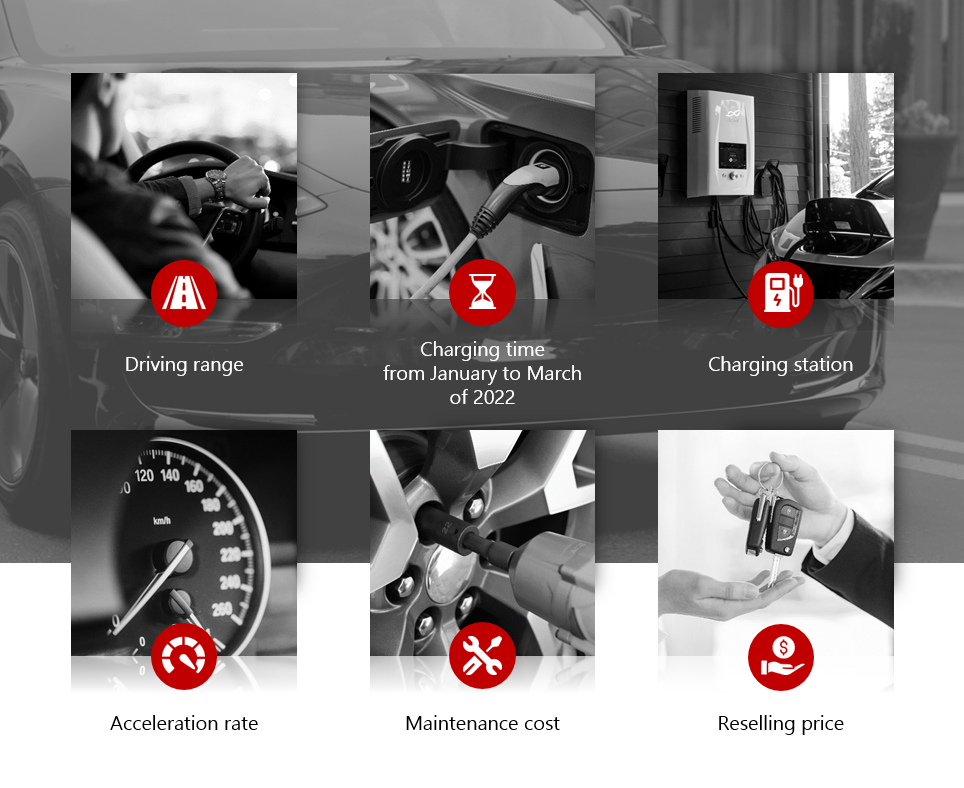
While studying the social media listening towards Brands, we discovered that
The EV brands mentioned in social media for car were

The EV brands mentioned in social media for motorcycle are

Thus, the stated brands have gained increased awareness in terms of their EV development. With the support of Wisesight’s Social Media Analytics, Cint’s Online Consumer Panel, and Custom Asia Research team, an online survey with a sample size of 100 was conducted from April - May 2022 to capture the xEV consumers sentiments and explore customer criteria on xEV cars. Here are the key findings that were found.
Thus, the stated brands have gained increased awareness in terms of their EV development. With the support of Wisesight’s Social Media Analytics, Cint’s Online Consumer Panel, and Custom Asia Research team, an online survey with a sample size of 100 was conducted from April - May 2022 to capture the xEV consumers sentiments and explore customer criteria on xEV cars. Here are the key findings that were found.
SAMPLE SIZE OF CAR OWNERS
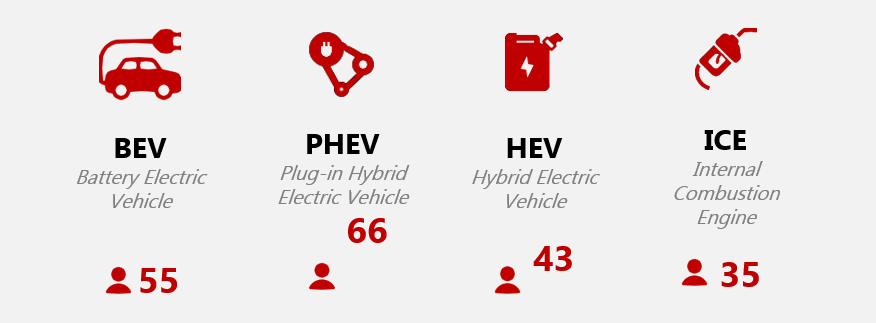
DRIVING RANGE, CHARGING TIME, BATTERY LIFESPAN AND PRICE ARE THE KEY
CONCERNS AMONG EV USERS
BEV industry has been expanding in Thailand with growing endorsement from car users. Therefore, the challenge goes into facilitating the Battery Electric Vehicle (BEV) users for a hassle-free, user friendly experience. We discovered upon our research that with the growing endorsement of BEVs, one of the most common aspects of the vehicle that raises skepticism was the battery. While some may assume that the main opposition to BEV cars was their price, our research has shown that the Thais have established certain purchasing criteria that not only involves the vehicle price but also the charging speed, battery lifespan, and the battery warranty coverage.
BEV industry has been expanding in Thailand with growing endorsement from car users. Therefore, the challenge goes into facilitating the Battery Electric Vehicle (BEV) users for a hassle-free, user friendly experience. We discovered upon our research that with the growing endorsement of BEVs, one of the most common aspects of the vehicle that raises skepticism was the battery. While some may assume that the main opposition to BEV cars was their price, our research has shown that the Thais have established certain purchasing criteria that not only involves the vehicle price but also the charging speed, battery lifespan, and the battery warranty coverage.
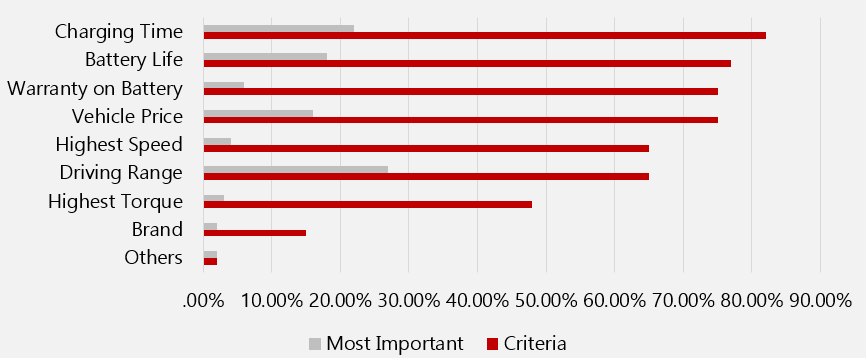
THE APPROPRIATE CHARGING TIME WAS FOUND TO BE 30-45 MINUTES AND THE OWNERS PREFERED TO CHARGE THEIR VEHICLES AT HOME
THE APPROPRIATE CHARGING TIME WAS FOUND TO BE 30-45 MINUTES AND THE OWNERS PREFERED TO CHARGE THEIR VEHICLES AT HOME
Battery charging speed was the most important purchasing criteria chosen by BEV users. It was evident from our research that most users preferred their vehicle be fully charged within 45 minutes for direct current charging. In addition, 86% of the respondents stated that they generally charge their BEVs at the convenience of their homes. However, this finding did not negate but confirmed the fact BEV cars at this hour seemed to be supporting a certain lifestyle of short distance traveling.
Battery charging speed was the most important purchasing criteria chosen by BEV users. It was evident from our research that most users preferred their vehicle be fully charged within 45 minutes for direct current charging. In addition, 86% of the respondents stated that they generally charge their BEVs at the convenience of their homes. However, this finding did not negate but confirmed the fact BEV cars at this hour seemed to be supporting a certain lifestyle of short distance traveling.
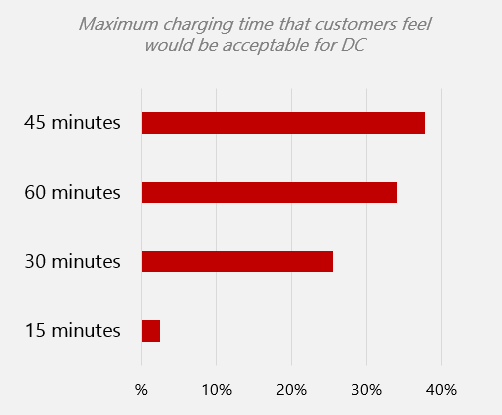
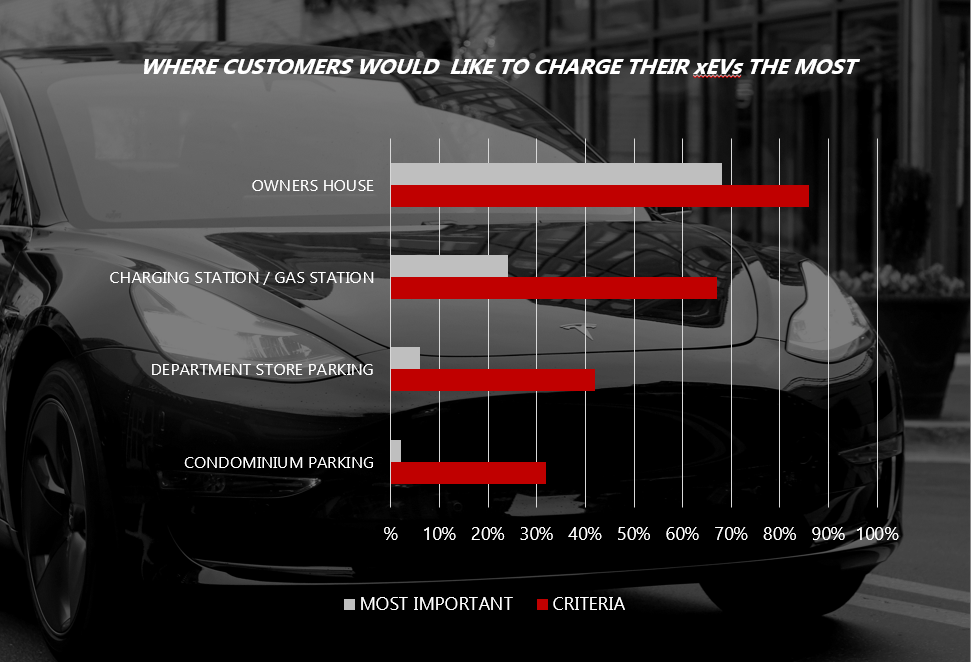
PURPOSES OF USING BEV WERE FOUND TO BE FOR ERRANDS AND SHORT DISTANCE TRAVEL
In the eyes of the public, slow recharging speed along with inadequate charging stations especially in the upcountry with difficult terrain would make long haul traveling a true hassle or nearly impossible. Although 94% of the respondents stated that their BEV usage was mainly to run errands and for everyday commute, 67% of the respondents have used their BEV cars for short-distance travel (less than 300 kilometer), while over 50% of the respondents have used their BEV cars for long-distance travel (over 300 kilometer). The results depicted usages that extend beyond daily journey. Hence, improving re-charging speed could immensely expand car usage and the attractiveness of BEV cars.
Driving occasion that customers tend to use their xEVs
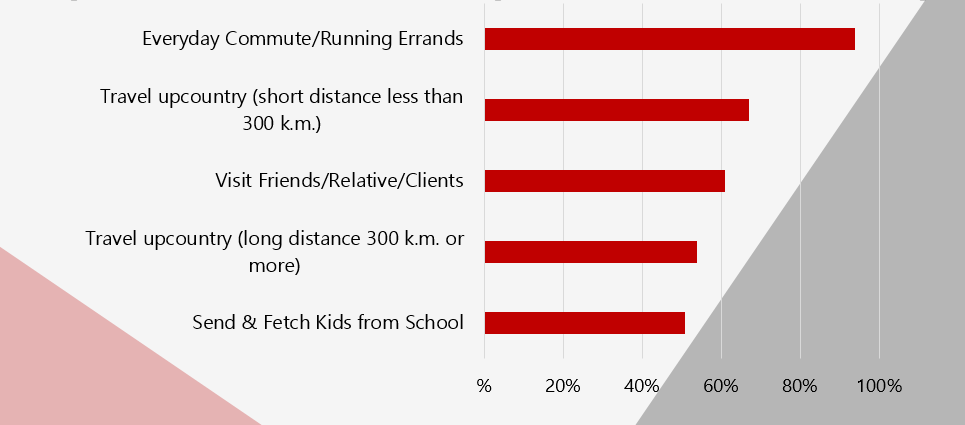
TOP CONCERN WAS FOUND TO BE BATTERY CONDITION
The lifespan of a battery was also mentioned by 77% of respondents. As BEV cars were solely reliant on battery, it was inevitable for users to be attentive to how long the battery would last. Some feared that the BEV cars might lose their full potential of being fully charged after a certain period of time, while others were concerned of the cost of replacing the battery. Our research showed that 58% of the respondents said that being able to get a battery life check at a charging station would be ideal.
PURPOSES OF USING BEV WERE FOUND TO BE FOR ERRANDS AND SHORT DISTANCE TRAVEL
In the eyes of the public, slow recharging speed along with inadequate charging stations especially in the upcountry with difficult terrain would make long haul traveling a true hassle or nearly impossible. Although 94% of the respondents stated that their BEV usage was mainly to run errands and for everyday commute, 67% of the respondents have used their BEV cars for short-distance travel (less than 300 kilometer), while over 50% of the respondents have used their BEV cars for long-distance travel (over 300 kilometer). The results depicted usages that extend beyond daily journey. Hence, improving re-charging speed could immensely expand car usage and the attractiveness of BEV cars.
Driving occasion that customers tend to use their xEVs

TOP CONCERN WAS FOUND TO BE BATTERY CONDITION
The lifespan of a battery was also mentioned by 77% of respondents. As BEV cars were solely reliant on battery, it was inevitable for users to be attentive to how long the battery would last. Some feared that the BEV cars might lose their full potential of being fully charged after a certain period of time, while others were concerned of the cost of replacing the battery. Our research showed that 58% of the respondents said that being able to get a battery life check at a charging station would be ideal.
Attributes that would contribute to the best charging environment for customers
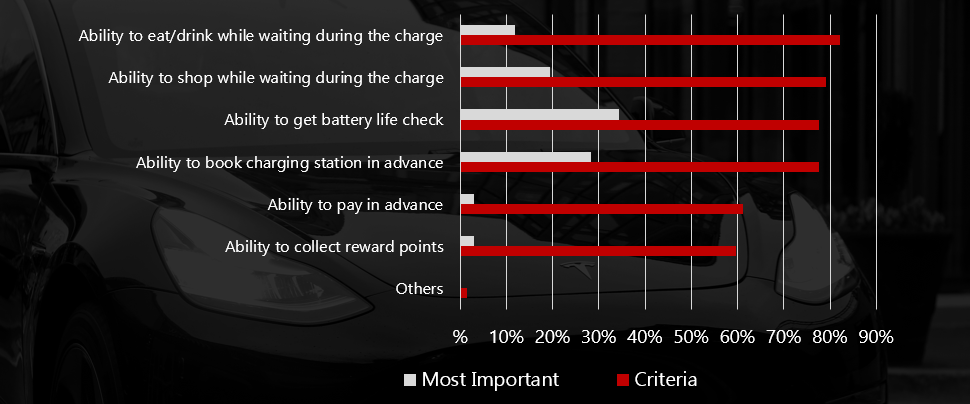
5 YEAR WARRANTY WAS FOUND TO BE WHAT CUSTOMERS NEEDED
According to our research, 75% of the respondents disclosed that they had considered battery warranty coverage prior to making their xEVs purchases. As users speculated that the maintenance cost for xEV cars might be higher than their conventional engine cars, stemming from the fact that they would not be able to send to their local garages for repair, they have been gravitating towards examining the battery warranty coverage. Over 42% of the respondents specified that the minimum battery warranty coverage acceptable should be around 5 years, surpassing that of combustion vehicles. Thus, there was a need for a reasonable battery warranty coverage for xEV users, as this particular attribute alone contributes greatly to the users’ final purchase decisions.
Minimum time of battery warranty that would be acceptable for customers

Although it is undeniable that price has played an important role in influencing the purchase of xEV, one should not overlook the alternative perspectives on the significance of the battery’s charging time, lifespan, and coverage plan that have growing impact on customer purchase behaviors. Since xEV segment has been expanding in the Thai car market, it is crucial to give prominence to the stated factors in order to cater towards the users and potential buyers and, create a more flexible environment that is not limited to distance.
Attributes that would contribute to the best charging environment for customers

5 YEAR WARRANTY WAS FOUND TO BE WHAT CUSTOMERS NEEDED
According to our research, 75% of the respondents disclosed that they had considered battery warranty coverage prior to making their xEVs purchases. As users speculated that the maintenance cost for xEV cars might be higher than their conventional engine cars, stemming from the fact that they would not be able to send to their local garages for repair, they have been gravitating towards examining the battery warranty coverage. Over 42% of the respondents specified that the minimum battery warranty coverage acceptable should be around 5 years, surpassing that of combustion vehicles. Thus, there was a need for a reasonable battery warranty coverage for xEV users, as this particular attribute alone contributes greatly to the users’ final purchase decisions.
Minimum time of battery warranty that would be acceptable for customers

Although it is undeniable that price has played an important role in influencing the purchase of xEV, one should not overlook the alternative perspectives on the significance of the battery’s charging time, lifespan, and coverage plan that have growing impact on customer purchase behaviors. Since xEV segment has been expanding in the Thai car market, it is crucial to give prominence to the stated factors in order to cater towards the users and potential buyers and, create a more flexible environment that is not limited to distance.